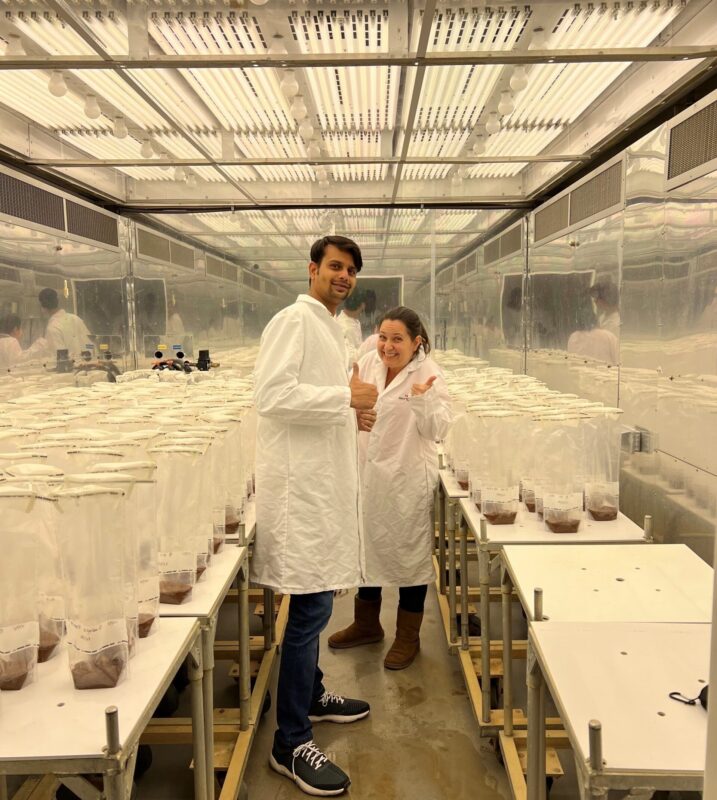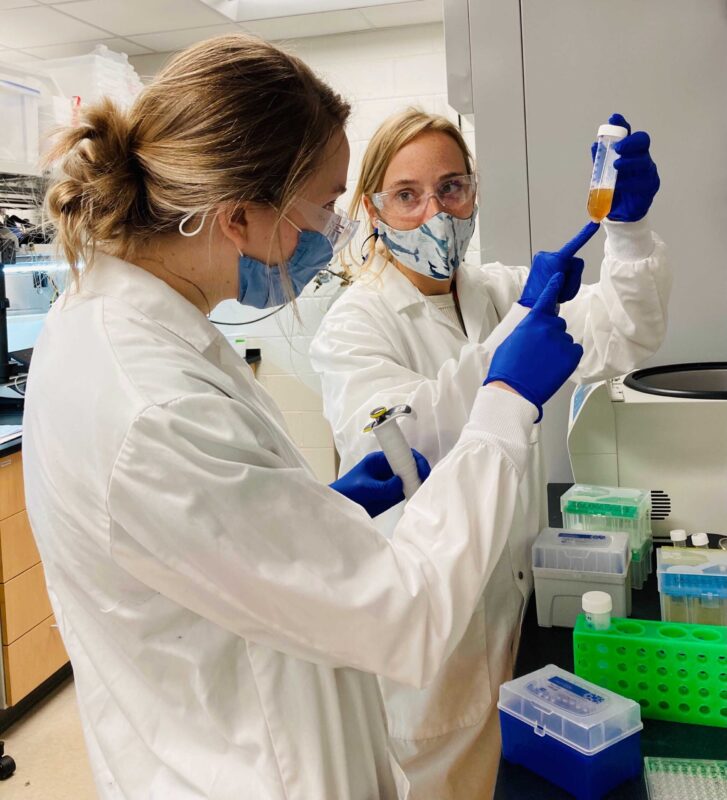Research
The Kleiner lab addresses critical questions about microbiomes and microbial symbioses in diverse systems by developing and applying advanced multi-omics methods. Our current projects focus on the following:
- Methods for Microbial Community Analyses
- Development of cutting-edge methods for microbial community analyses focusing on metagenomics and high-resolution mass spectrometry based metaproteomics. A 20 minute overview presentation by Dr. Manuel Kleiner on what we can learn using metaproteomics is available here.
- Development of protein-based stable isotope probing methods (Protein-SIP) that allow us to identify and quantify incorporation of isotopically labeled substrates into specific species or proteins in microbial communities. An introduction to Protein-SIP is available here.
- Identification of proteomic signatures of microbial growth. An introduction to the topic can be found here.
- Plant-Microbe Interactions
- The development and evaluation of metaproteomics methods for root-associated microbes. This project is sponsored by the Plant Soil Microbial Community Consortium (PSMCC).
- Decoding plant-microbiome interactions for improved crop resilience using wheat as a model. This project is a large collaborative effort of many faculty members from NCSU and several Danish Universities sponsored by the Novo Nordisk Foundation.
- Experimentally informed metabolic pathway modeling of maize root-associated microbiota. This project is funded by USDA NIFA.
- Diet-Microbiome Interactions in the Intestinal Tract
- Harnessing metagenomics, metabolomics, metaproteomics, single cell imaging, and cultivation-based approaches to examine the mechanisms of interaction between intestinal microbiota and external substrates (diet) and host-derived substrates (host compound foraging). This project is supported by the NIH’s MIRA (Maximizing Investigators’ Research Award) grant.
- Direct linkage of dietary components with metabolizers in the microbiota. This project is sponsored by the Foundation for Food and Agriculture Research (FFAR) and BASF.
- The fate of dietary protein from different sources and its impact on the intestinal microbiota currently supported through a pilot grant from the Center for Gastrointestinal Biology and Disease (CGIBD).
- Some of our recent results in this are presented here.
- Dietary Protein and the Microbiome podcast.
- Phage-Microbiome Interactions
- The discovery and characterization of virotrophs, a hypothesized group of specialized bacteria which are capable of utilizing bacteriophage as a sole nutrient source for growth and replication. A brief introduction can be found here.
- Tracking horizontal gene transfer by virus-like particles in microbiomes using transductomics and metaproteomics.
- Carbon Sequestration and Bioremediation
- The role of microbes in mineral precipitation resulting in exceptional fossil preservation and CO2 sequestration sponsored by the National Science Foundation (NSF).
- Factors governing energy efficiency of metabolism in free-living and symbiotic bacteria, looking specifically at a novel CO2 fixation pathway.
- Molecular ecophysiology of microorganisms with two carbon fixation pathways funded by the Binational Science Foundation (BSF).
- How soil microbes and minerals make necromass that persists through a project funded by the US Department of Energy. A graphical abstract can be found here.
- Identify and quantify microbes involved in the degradation of biodegradable plastics (bioplastic), and characterize metabolic pathways that facilitate bioplastic degradation, and factors that limit degradation..
- Horizontal Gene Transfer
- The role of horizontal gene transfer in the metabolic evolution of bacterial symbionts.
- Insect-Microbe Interactions
- The saboteur’s tools: mechanisms for host reproductive manipulation by the bacterial arthropod endosymbiont Cardinium hertigii funded by the National Science Foundation (NSF). An brief introduction can be found here.


